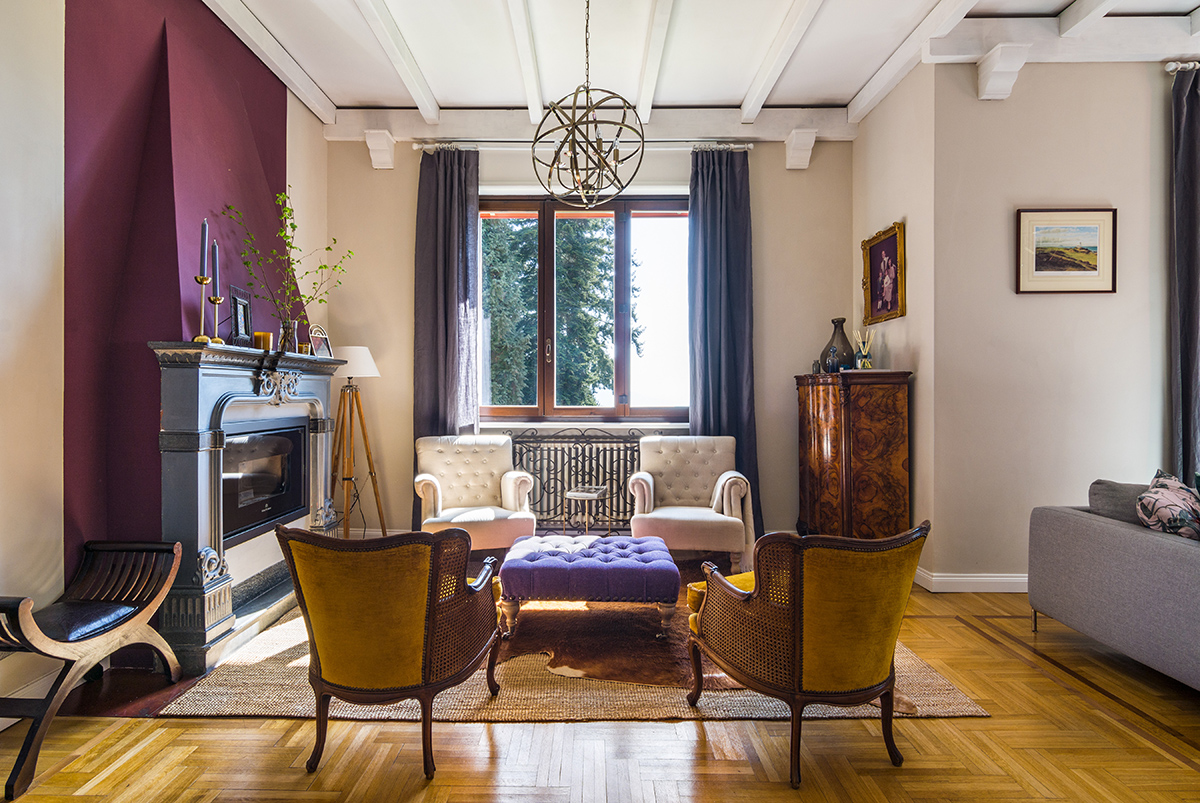Leggi questo post in Italiano
Eugenia Gourlay is a Russian interior designer who lives in Italy on the beautiful shores of Lake Maggiore with family. After a brilliant career in an oil company, she studied interior design in London and today she has turned her passion into a job. Eugenia takes beautiful photos of her fabulous house, an early 20th century villa, on her Instagram profile @eugenia.eginteriors, follow her!
We met on Instagram and became friends in real life too. I am fascinated by her ability to mix fabrics, textures and wallpapers with a very British touch.
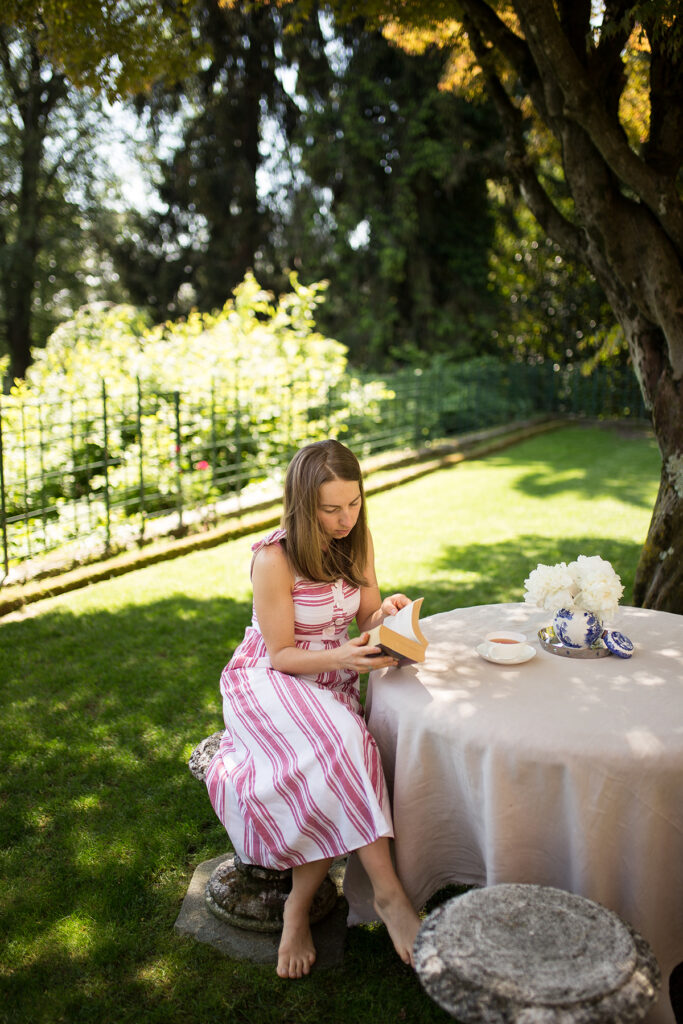
I introduce her to you with an interview in which I asked her about pretty everything: she talked about the differences between the world of Italian and British interiors, how she designs, upcoming trends… enjoy the reading!
Q. In your Instagram bio you wrote: “Born in 🇷🇺 living in 🇮🇹 with my 🇬🇧 family”. How do your Russian origin mix in your style with your Italian and British life?
A.
Microsoft PowerPoint – Intervista Gucki
Funny enough but it’s quite hard for me to respond to this question as I really don’t know… My growing up in the Soviet Union (and then post-soviet Russia) wasn’t filled with creativity and art… It was more about surviving and choosing a career pragmatically which
would fulfill basic needs rather than inner passions (this is how I originally ended up in the corporate world to which I am forever grateful).
I guess generally speaking Russian is a very hospitable culture (similar to British in that way) – a guest is everything, so the maximum level of hospitality is shown – this trait definitely helps me being more attentive to my clients and their needs as well as my inner impulse to create warm and inviting spaces.
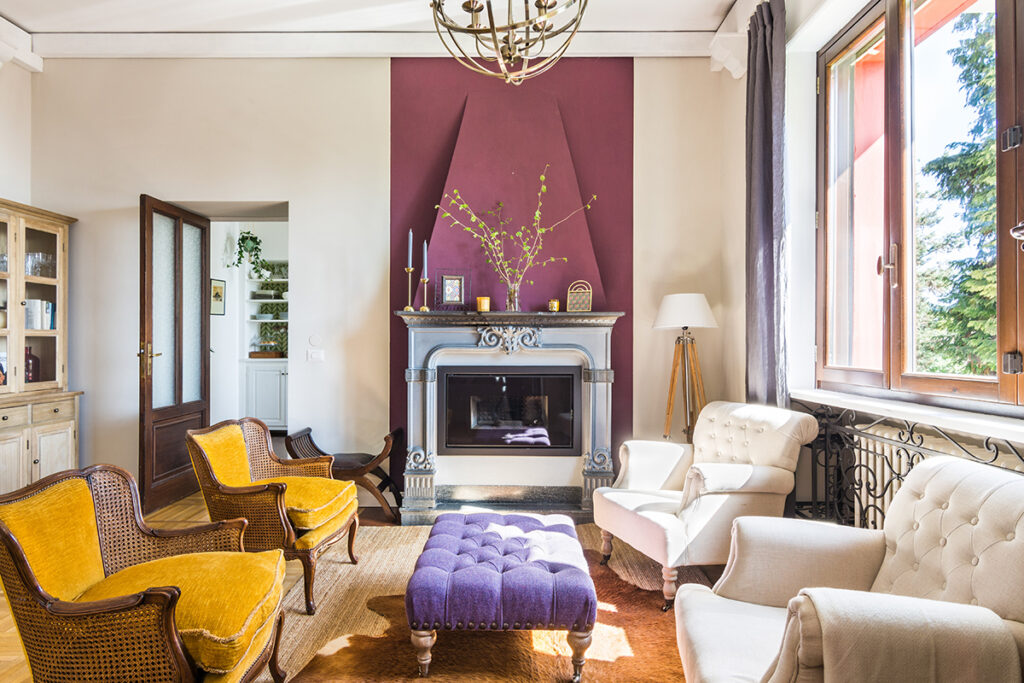

Q. You studied design in London, what is the emphasis on English interior design?
A. The emphasis is definitely made on researching as much as possible the client (their preferences and dislikes, hobbies, lifestyle, interests, etc) and fulfilling the brief. For all of the study projects, we had to have a personal diary where we would record our ideas, research, and thought process to demonstrate to professors our way of thinking when delivering the project. At times it almost felt like interior psychology. So definitely creating a space that would represent the client (more than an interior designer for sure).
Finding a designer’s personal style and recognizing when you put too much of yourself into someone else’s home…
The overall approach to teaching interior design is very practical (there is of course a lot of research and theory as well but the emphasis is made on practicing so you end up with all the necessary skills to deliver a project).
Students are encouraged to take on their first projects while still studying and practice as much as possible.
Q. How different is the world of British interior design from the Italian one?
A. It’s hard to generalize because the world of interiors is so diverse and depends on many factors (which makes it unique and special). The way I see it: for me, British design embraces nature, imperfections – the words “home, country, and cozy” come into my mind when I think about it. Even in many city residences we still see traces of that country style which is so innate in British design. Italian design instead is all about materials, quality, and Italian excellence (craftsmanship) – sober elegance with the highest quality possible.
Apart from style and general feel, I think that the interior market (especially mid-range) is much more developed in the UK compared to Italy. From time to time I find myself sourcing items from the UK (now it’s harder with Brexit): be it wallpaper, furniture, or decor. There is more choice, there is a wider price range (in Italy there is a massive gap between high-end design and high street design) as well as customization options. I guess it is natural as the history of design starts with Victorian industrialization and we see the beginning of interior design history in the UK (Morris comes to my mind… even though he was very much against industrialization).
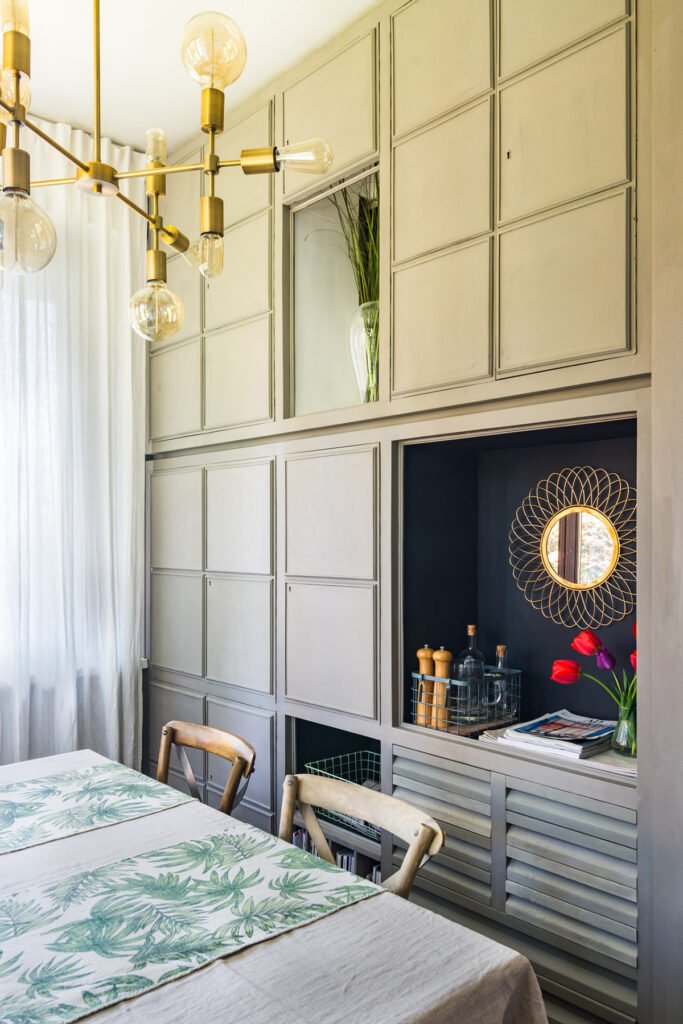
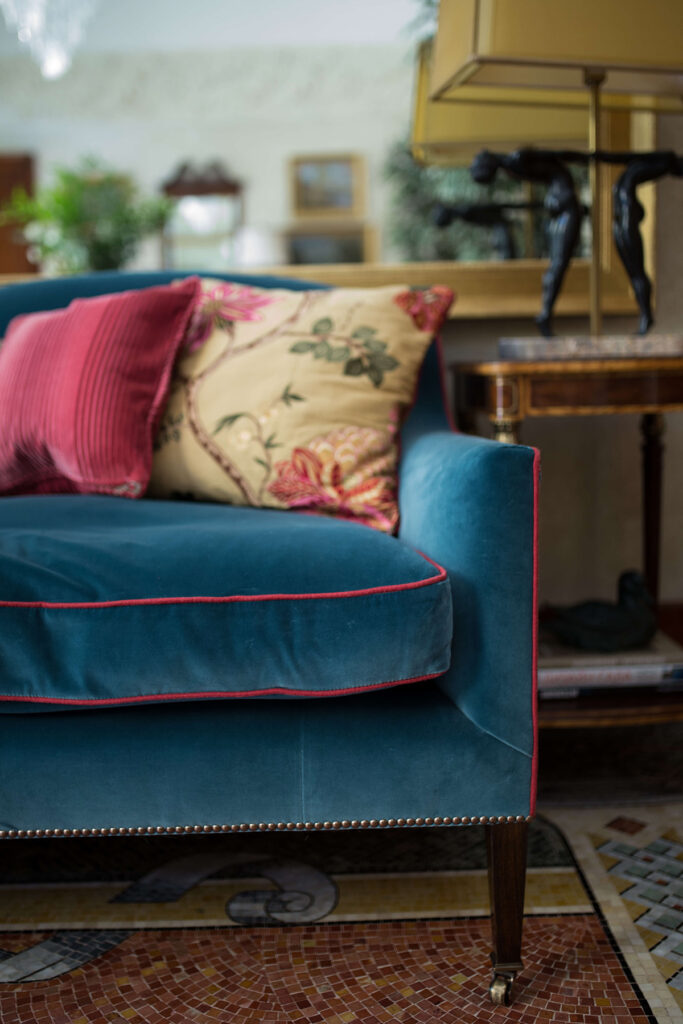
Q. Can you tell us a little about the differences you notice between UK and Italy in the use of materials, colors and fabrics?
A. In my opinion, British interiors are more daring & brave in terms of combination of colors, textures, and finishes.
In Italy interiors are more sober, elegant… I think people are conscious and careful with what they do in their homes wanting to do the right thing and follow the trends.
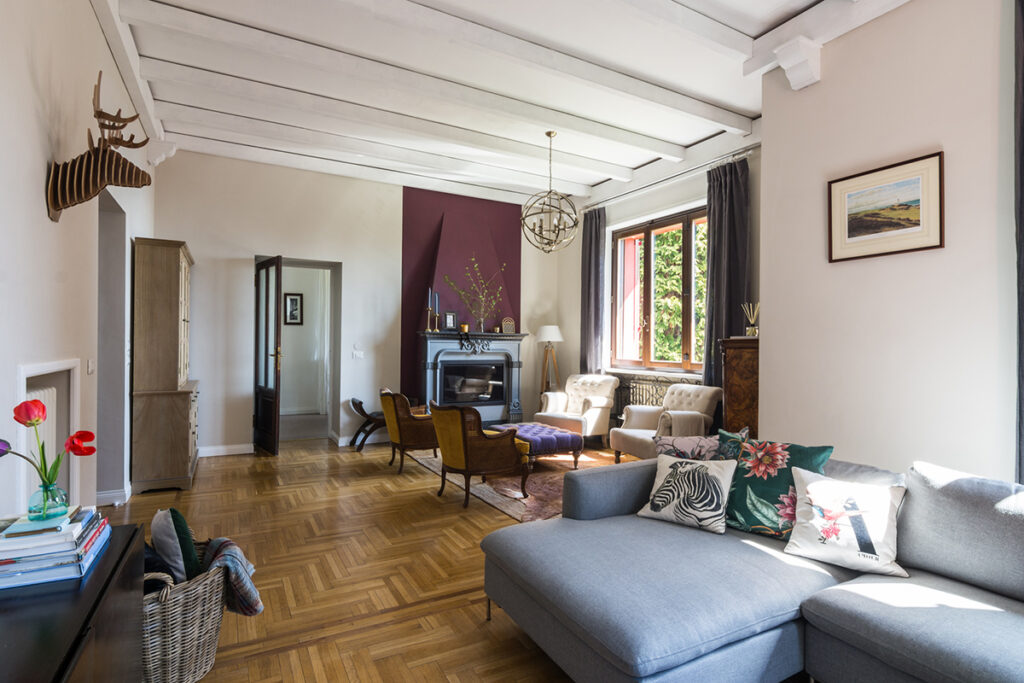
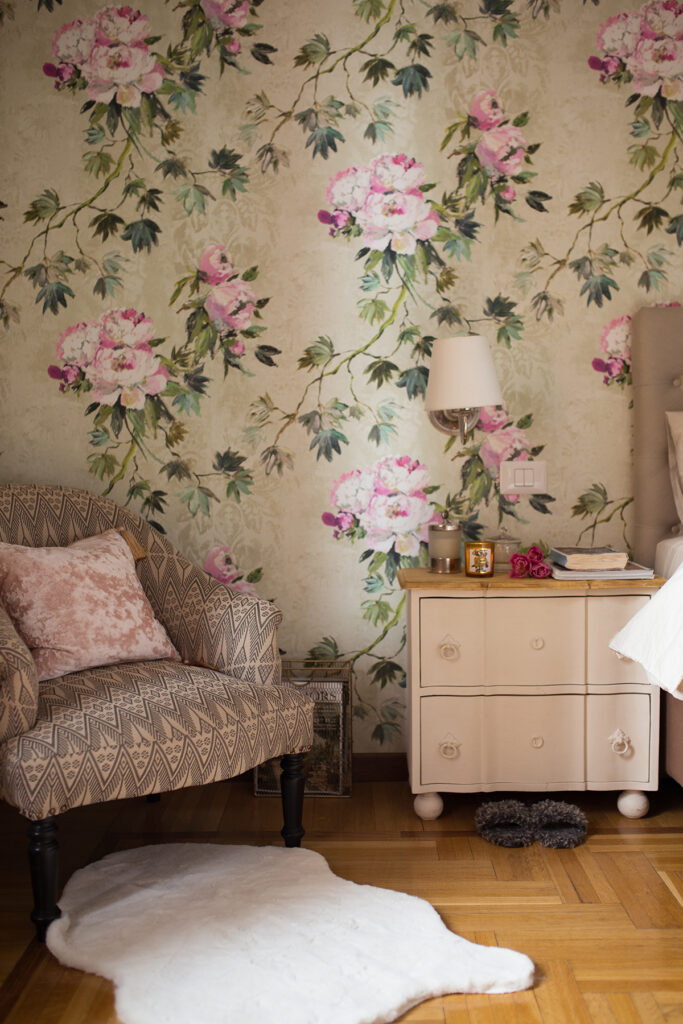
Q. How important are textiles and wallpapers in an interior?
A. The importance of the use of wallpaper and various fabrics depends on the person who would live in that interior. There are some people (like me) who love color, mixing textures and patterns – there are also people who love more subtle spaces; and there are some which prefer simple white room (I read in some article that Oki Sato, for example, prefers plain white space where to create as it frees up his mind). So it’s hard to give an objective answer.
For me personally, mixing colors, textures, use of wallpaper is very important – I am quite a dynamic person, I need a lot of visual stimulation – everywhere I look I need to see something interesting & stimulating.
Talking of wallpaper, I believe it a fantastic tool which makes a space warm, inviting and interesting. If there is a well-balanced, harmonious mix of patterns, color & textures (through the use of wallpaper & fabrics), it definitely adds depth (multi-layering) and a lot of interest to the interior.
When working with fabrics and wallpapers, it is important to never consider them separately. Colors & patterns are never perceived on their own but in a group. I try to always remember this formula “Colour + Pattern + Texture + Style = The feeling”.
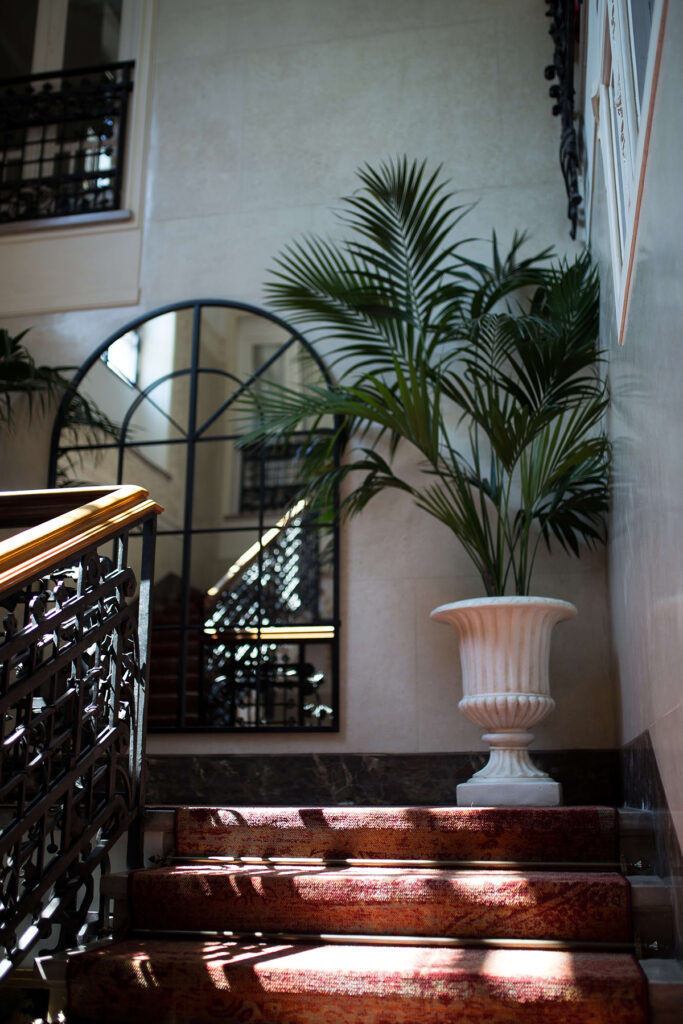

Q. What is the one thing there will always be in your interior project?
A. I always encourage my clients to integrate indoor plants in their interiors – they directly connect us to nature, purify the air and make any interior look more alive. Also, I have been learning a lot about biophilic design at the moment – the soothing power of indoor plants can never be underestimated.
Q. Is there something that can be recognized as your “design signature” in a project?
A. It’s hard to say… I think it will be easier to answer when I have completed more projects in the future… (fingers crossed).
For now, I love creating my own flower arrangements* either at my home or when styling my finished interiors.
*Eugenia creates amazing flower arrangements with everything she can collect in her garden such as pampas grass, hydrangeas and Christmas wreaths, do not miss her workshops!
Q. Do you have a favorite interior designer to inspire you?
A. There are so many talented designers and architects out there – I guess I get more inspired by spaces that they create than designers themselves.
One of my favorite designers from the past is Renzo Mongiardino – I have several of his books and I find his approach and methods of decorating fascinating.
From modern designers: Milanese studiopepe, Dimorestudio probably my two favorites, British Beata Heuman and American – Amber Interiors, CeCe Barfield.
Q. Which books would you recommend to those who love your style?
A. Right now I would recommend these five books that say a lot about me and my passions:

Renzo Mongiardino, Architettura da Camera
This is one of my the most favorite books. It is not just a coffee table book, it’s more of a study book where Mongiardino explains his thought process and how he decorated interior spaces, where he got inspiration from and a lot more. For me, this book is about the art and the talent of interior decoration as well as the process. I am passionate about interior sketching (I prefer it to computer renderings) – again, it’s a form of art for me. The book is full of Mongiardino’s sketches and interior drawings of his projects.
*This book published by Rizzoli in 1993 is difficult to find. Look for it on eBay or on websites and bookstores that sell second-hand books.
Since I recently completed the “Sustainability in Interior Design” course, I became very passionate about the subject of biophilia. I guess, it is because I live in a place surrounded by nature and can assess the impact of nature on my well-being. I have bought several books on biophilic design and would definitely recommend this one – it’s quite small, extremely easy to read, and of great quality so a good addition to any collection.
This is my recent acquisition and I really enjoyed the book. I think it is very representative of a British Style (very open, friendly approach to everything. Homes, rather than showrooms, filled with treasured objects. Typical, for British design, use of wallpapers and fabrics (especially matching wallpaper with curtains or cushions (or even lampshades) on your bed demonstrating it is custom-made and not just bought in a shop).
Very brave book which studies the importance (and degrade) of concept of beauty in our lives and criticizes Modernism & International style.. I feel very close to the way of thinking in this book so was really happy when I read it. At the end, (interior) design & architecture cannot be just about functionality, it had to evoke some (hopefully positive) feelings in us..
Chinese Art. A guide to Motifs and Visula Imagery
Living in a period property (a historic villa of early ‘900) and working with some other historic villas, I often use Chinese art (mostly ceramic) in my projects and my home. This book is very detailed and thorough and helps me decode messages and meanings on ceramic pieces.
I like for things to have a meaning, convey something, as it suddenly stops being just a “thing”.
Q. How much has the British world influenced you? How much that of Italian design?
A. I guess both British and Italian worlds have influenced me equally: when I work on residential projects I always try to remember that I am decorating a home where people need to unwind, find shelter and be able to relax so creating welcoming and homely interiors but Italian soberness & elegance helps me stop at the right time, not to over-decorate and keep things rather simple.

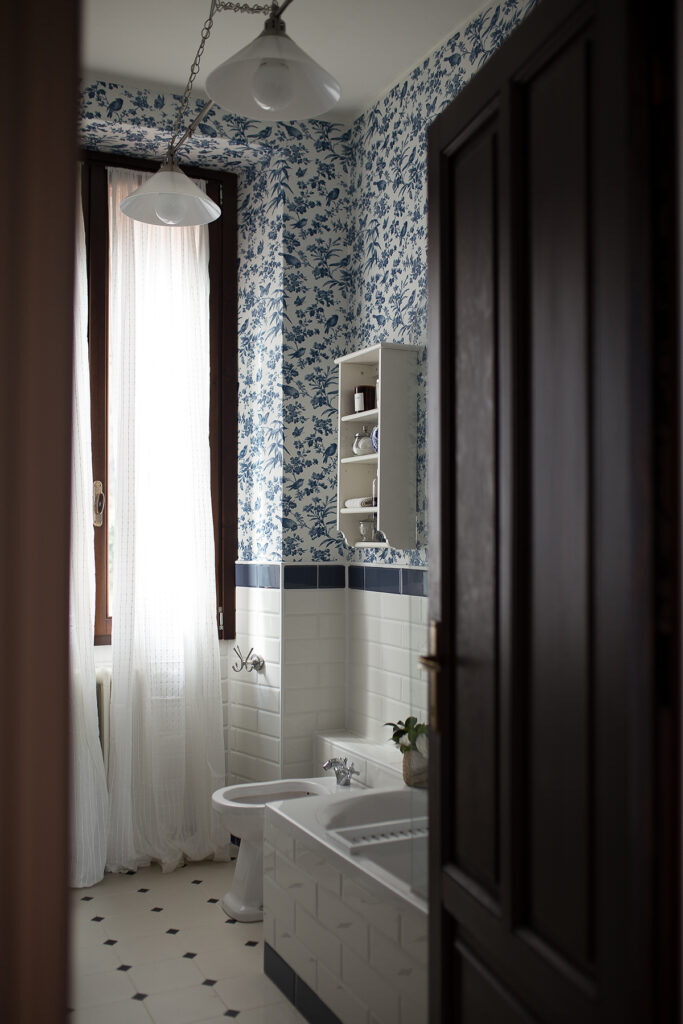
Q. What will be the upcoming trends in your opinion?
A. It’s really hard to talk about trends but naturally I read different interior magazines and listen to interviews where experienced designers & trend researchers talk about future forecasts.
So from what I read, here are few main trends for 2021:
- Biophilic design is very “in” at the moment (lockdown proved to many how important daily exposure to nature is). Talking of biophilia, I am currently learning a lot about it and had done several online courses as well as read a few books on biophilic design. It’s a fascinating subject and goes very close with eco-design.
- Textured furniture & wallcoverings (3D textured wallpaper, tiles and furniture). Less of smooth surfaces.
- Segregation of spaces (as opposed to open-plan living) – again influenced by lockdown experience where people needed to define and segregate spaces rather than be in one same space all the time.
- Eco-design – I guess it’s no longer a trend but our daily reality. However, more & more people become aware of it and more designers introduce eco practices in their work (recycling, upcycling, using natural materials, thinking about the total life cycle of the product or material).
For me personally, the most important thing about trends is to always remember that trends are there to inspire us and make us reflect but not to dictate. In the end, we should go for what makes us feel happy and replenishes our energy.
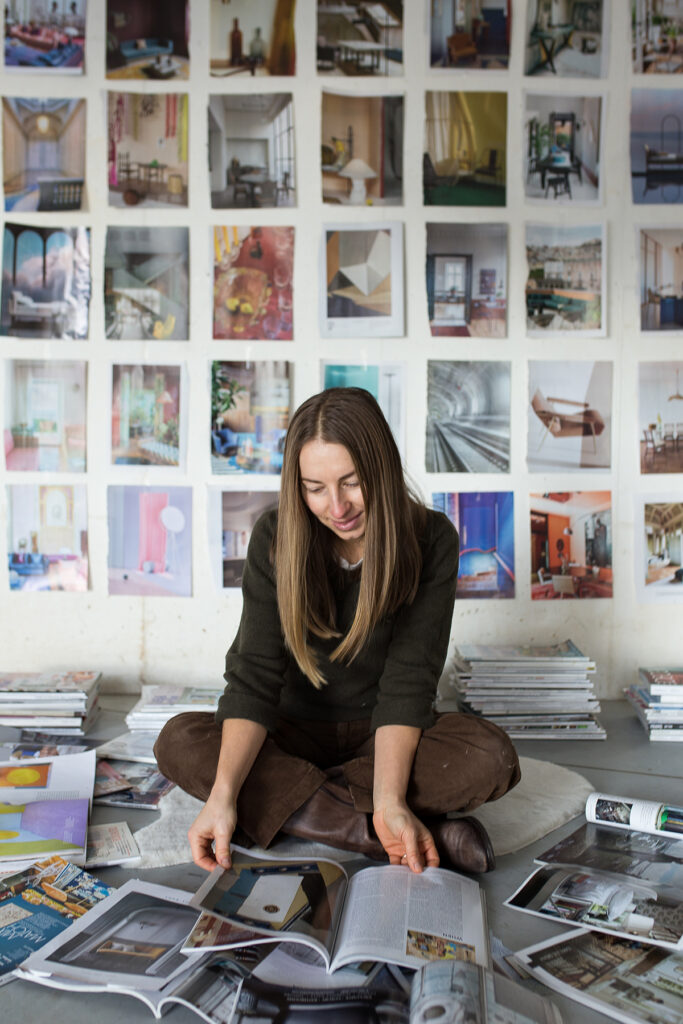
Q. Do you have a design method? Can you tell us briefly?
A. I always try and remember that an interior should stimulate all our 5 senses so when I decorate I think about various ways of fulfiling that.
I believe that the interior should be coherent and complement the exterior/architecture of the building.
Otherwise, I start with design analysis (what is given and what the client wants to achieve), I proceed with space planning, create visual boards and always a sample board for each space (where I use samples of wallpapers and various finishes, fabrics, etc), when the project is approved by the client, we start implementation.
Q. Where do you find inspiration for your projects?
A. Most of my inspiration I take from nature and architecture which surrounds me – Lago Maggiore is a stunning place – there is literally everything from elegant historic villas to rural areas, gardens, and parks.
Q. Do you have a dream project?
A. I guess a dream of many creative people would be having total freedom when delivering a project. This is why many designers showcase their homes as an example of their best work because it’s a space where they can fully unleash their creativity.
Follow Eugenia on Instagram @eugenia.eginteriors you’ll find her outstanding home (it was also published in the CasaFacile interior magazine) and keep update with her projects!
Thank you again Eugenia!
Photo Eugenia Gourlay – Constanza Delvecchio – Roy Bisschops

